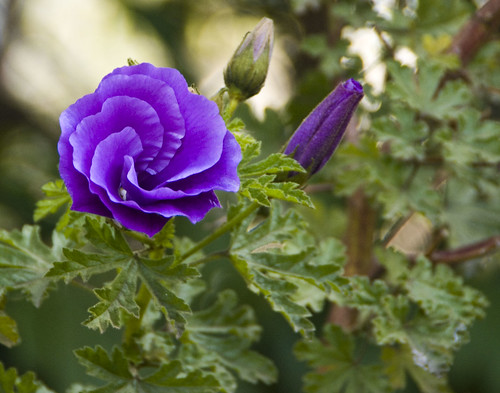The complete CRN edition of RWG is available on http://www.cpod.org.au/ , just click on 2RRR to find this week’s edition.
Also on FACEBOOK
Design Elements
with Landscape Designer Louise McDaidToday’s Design Elements is the second in the series of vertical gardens and living walls.
If you’re creative or a bit handy, I’m sure you can come up with lots of different ways to make a vertical garden with pots or hanging baskets.
 Perhaps convert a crate, turn it on
its side and fill in the spaces with compost and plants.
Perhaps convert a crate, turn it on
its side and fill in the spaces with compost and plants.There are also modular units you can buy like in this photo to the right.
Let's find out more
Vegetable Heroes:

Last week it was tomatoes but this
week something you may not heard of – Tomatillos or Physalis ixocarpa.
Tomatillo means little tomato in Spanish.They have lance shaped deeply veined leaves, yellow flowers and are also known as: Husk Tomato, and Mexican Green Tomato.
Tomatillos have a two-celled rounded berry enclosed in the thin husk of it’s extended calyx.
Tomatillos are related to Cape Gooseberry, Physalis peruviana. Be careful about the species part of the Botanical name when ordering your Tomatillo plant or seeds.
Tomatillo is a perennial, often grown as an annual, is usually sprawling and in need of support. It can reach up to 1 metre or more tall and the same across.
The green, yellow-green or purple fruit completely fill the lantern looking husk. The fruit which grows 3-4 cm in diameter is smooth and sticky under its’ husk.
Raw tomatillos have a zesty tart flavour that develops into a herbal lemon taste when cooked.
The flesh is solid and seedy.
Tomatillos are easy to grow and will suit gardeners will any ability of any age.
They grow in similar way to tomatoes but are hardier and less prone to diseases such as fusarium or verticillium wilt. They will tolerate partial shade.
Sow tomatillo seeds directly in the ground once all danger of frost is past and the soil is warm, at least 27°C.
If you live in a cooler area, start seeds in trays in a warm spot and transplant at the same time as you would tomato seedlings.
The plants set flowers earlier than tomatoes, and the fruits can be harvested sooner, making them a good choice for areas with a short growing season.
Space the plants 1m apart and provide support with a stake or a cage. Harvest when the fruit fills the husk but is still firm.
Don't remove the husks until you're ready to use the fruits.
Tomatilloes can be stored in the refrigerator for up to a month and freeze well.
Varieties of Tomatillo include:'Toma Verde' is a heavy fruiting tomatillo with fruit the size of a small tomato.
Tomatillo 'Purple' An heirloom variety that is very productive. Fruits are 3-4 cm across with a dark purple skin. Both of these will be ready to pick in 10 - 11 weeks.
To eat Tomatillos, remove the cellulose husks and wash the tomatillos thoroughly. You'll notice they have a slightly sticky surface. This is normal.
Tomatillos can be chopped and added to any salads.
Tomatillos make an excellent addition to a raw soup when you want that tangy, lemony touch. They can be added to stir fries and used in all manner of salsa’s and other Mexican dishes.
Plant of the Week:
Some gardeners often forget that Australia is a country with wide and varied climates.Australian Native Flora has adapted to these areas and much of this flora can be grown in your very own garden. So it doesn’t matter where around Australiayou live, there is a range of very distince and diverse Australian Native Plants that are especially suited to your climate and garden conditions.
For native plant lovers, you would know that Alyogyne is in fact a great flowering shrub that you can have lots of in your garden .
Better still, this native with the unfortunate name would suit any other type of garden because it fits in so well with non-native plants as well.
These types of plants are great for any garden because they have lilac or pale lilac large hibiscus like flowers starting in late spring and continuing through summer that are attractive to various insects including butterflies. So why not plant three or more?
Information from the grower:
The two new selected varieties are just that-chance seedlings that showed promise and now have been propagated from a main parent plant with the desired colouring in the flower.
Though they are similar in size (1-1.5 m tall and wide), their flowers are different in hue. Karana has deep mauve, open trumpets while the flowers of Misty are pale soft mauve; both bloom from spring to autumn. The choice for you is simply colour preference (or maybe choose both?) as they both grow as dense hedges for screening or could even be espaliered. They’ll thrive in well drained soils, in cool temperate to sub tropical regions, including coastal areas. They’ll quickly re-shape after having their feathers ruffled with a cutting back, once flowering is over.
Genus species-Alyogyne huegelii selection.Cultivar Name-Karana™
Habit-Graceful medium shrub--1.5m H x 1-1.5m W
Flower Information-Masses of deep blue-mauve open trumpet flowers.
Genus species-Alyogyne huegelii selection-Cultivar Name-Misty™
Habit-Graceful medium shrub-1-1.5m H x 1-1.5m W
Frost Tolerance-Medium
 |
| Alyogyne huegelli, original form |


No comments:
Post a Comment